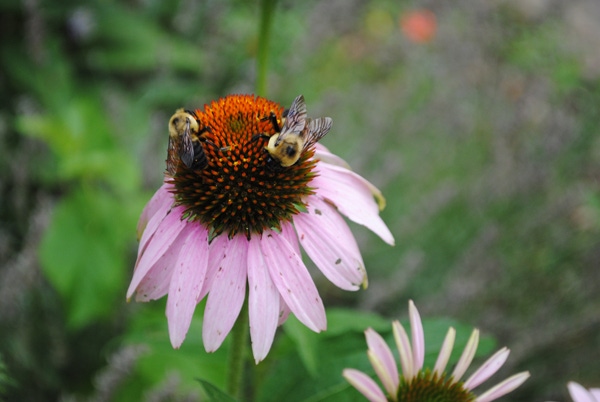August 2, 2016

Producers may want to consider the impact on bees before spraying an insecticide to insure soybeans stay pest free.
Although soybean aphids remain at low levels, Reed Johnson and Andy Michel, two Ohio State University researchers are concerned that many growers are going to add insecticides to spray tanks when applying fungicides.
“Well, I’m going over the field anyway so I thought I’d add an insecticide for insurance purposes! The insecticide is relatively cheap and soybeans are worth so much!” is what researchers say they hear from farmers this time of year.
The researchers are clear that they do not recommend this practice, and feel an IPM approach is much better for everyone and everything, including the environment. They do not recommend an insecticide application unless there is a need.
However, the researchers realize that this is being done. Both agree that growers and custom applicators need to protect bees when spraying insecticides on soybeans (or any crop or insect pest for that matter).
The need to do this is present whether the insecticide is being sprayed for an actual pest, or when being sprayed for “insurance purposes!”
Remember that most insecticides have a caution statement on their label about spraying around bees and blooming crops. The typical statement is: “This product is highly toxic to bees exposed to direct treatment or residues on blooming crops or weeds. Do not apply this product or allow it to drift to blooming crops or weeds if bees are actively visiting the treatment area.”
How often do bees visit soybeans? Soybeans bloom flowers produce a very sweet nectar that, depending on conditions, can be highly attractive to bees.
However, it can be difficult to appreciate how much foraging is really occurring because both the bees and flowers are hidden below the canopy. In a survey of honey produced in the summer of 2014 soybean pollen was found in nearly half of honey samples—a strong indication that bees are indeed foraging in soybean fields.
Further, bee pollination has been shown to increase soybean yield by as much as 18 percent in some studies, so it really can be counterproductive to risk killing bees visiting soybeans with an “insurance” application of insecticide.
Many states address this concern. In Ohio, the department of agriculture by making it clear that no one should apply or cause to be applied any pesticide that is required to carry a special warning on its label indicating that it is toxic to honey bees, over an area of one-half acre or more in which the crop-plant is in flower unless the owner or caretaker of any apiary located within one-half mile of the treatment site has been notified by the person no less than twenty-four hours in advance of the intended treatment; provided the apiary is registered and that the apiary has been posted with the name and telephone number of the owner or responsible caretaker.
The ODA also makes it clear that producers should not apply pesticides which are hazardous to honey bees at times when pollinating insects are actively working in the target area; however, application of calyx sprays on fruits and other similar applications may be made.
Growers and applicators are encouraged to maintain good communications with bee keepers near their fields to prevent and limit unintended problems.
Below are some specific recommendations for environmental and pesticide factors that will lessen the potential for injury to bees.
- Drift of pesticide not only can injury non-target plants but bees or other insects located within the canopy of non-target plants. Follow all precautions related to drift such as wind speed, direction identifying risk potential of neighboring crops. Recently researcjers have seen more fields with filter strips or other conservation areas along borders. Plants in these border areas may be in bloom and harboring foraging bees. Drift or spray overlay has the potential to cause injury to bees and should be considered in pesticide applications.
- Timing of application can limit bee injury. Applications in the evening or early morning are generally best. Bees are less active at these times of the day. Other times when the blooms are less attractive and lower bee activity are acceptable as well.
- Formulations of pesticides will make an impact on toxicity. Dust and wettable powders are more toxic than emulsifiable concentrates. Ultra low volume applications versus a regular application are generally more toxic. No repellents can be added to tank mixes that will keep bees away from treated areas.
- Toxicity of pesticides can differ. Most pesticides have been tested with bees in laboratory settings. Keep in mind there can be differences in field results versus laboratory results due to environmental factors as well as the sensitivity difference in populations of bees.
You May Also Like




